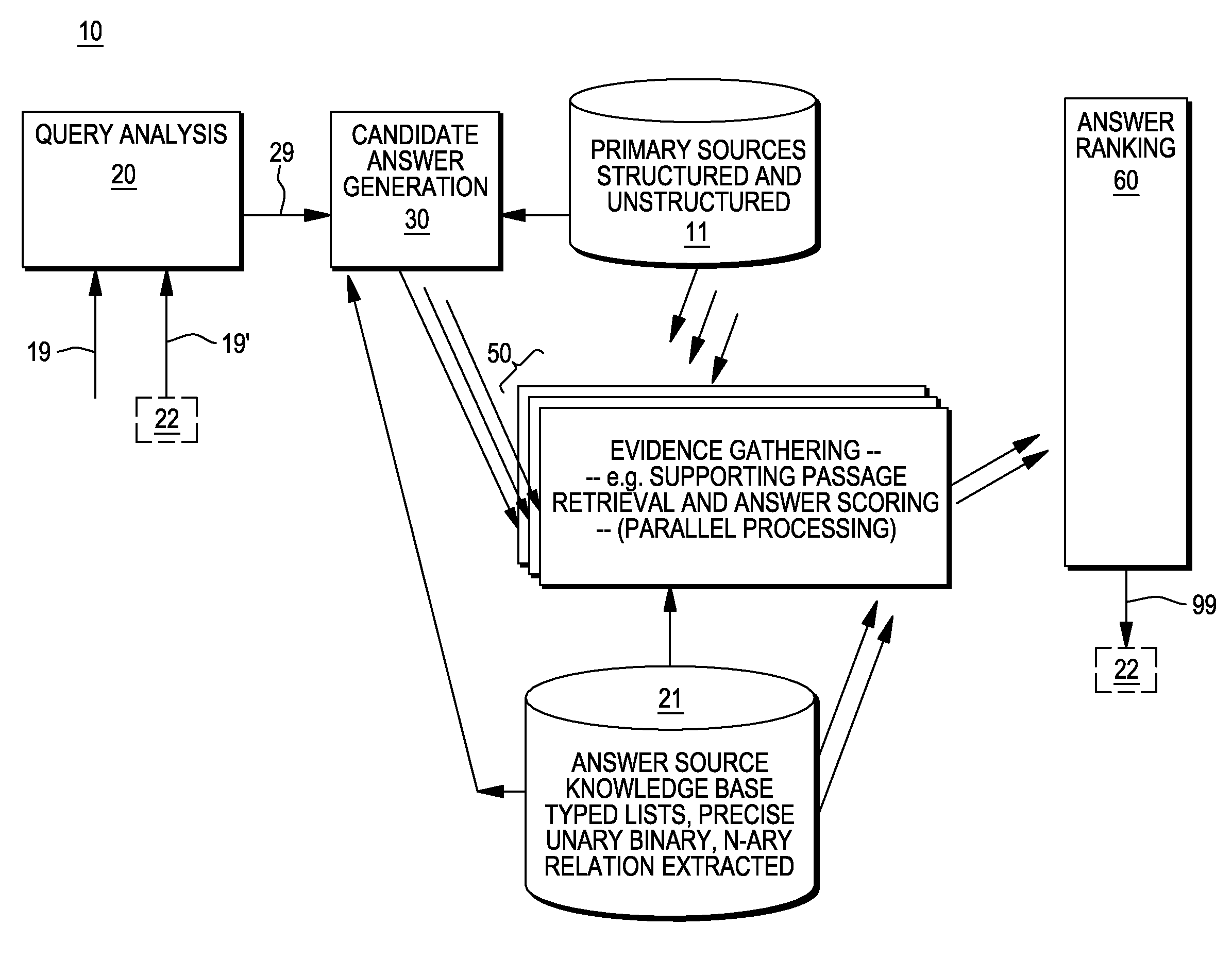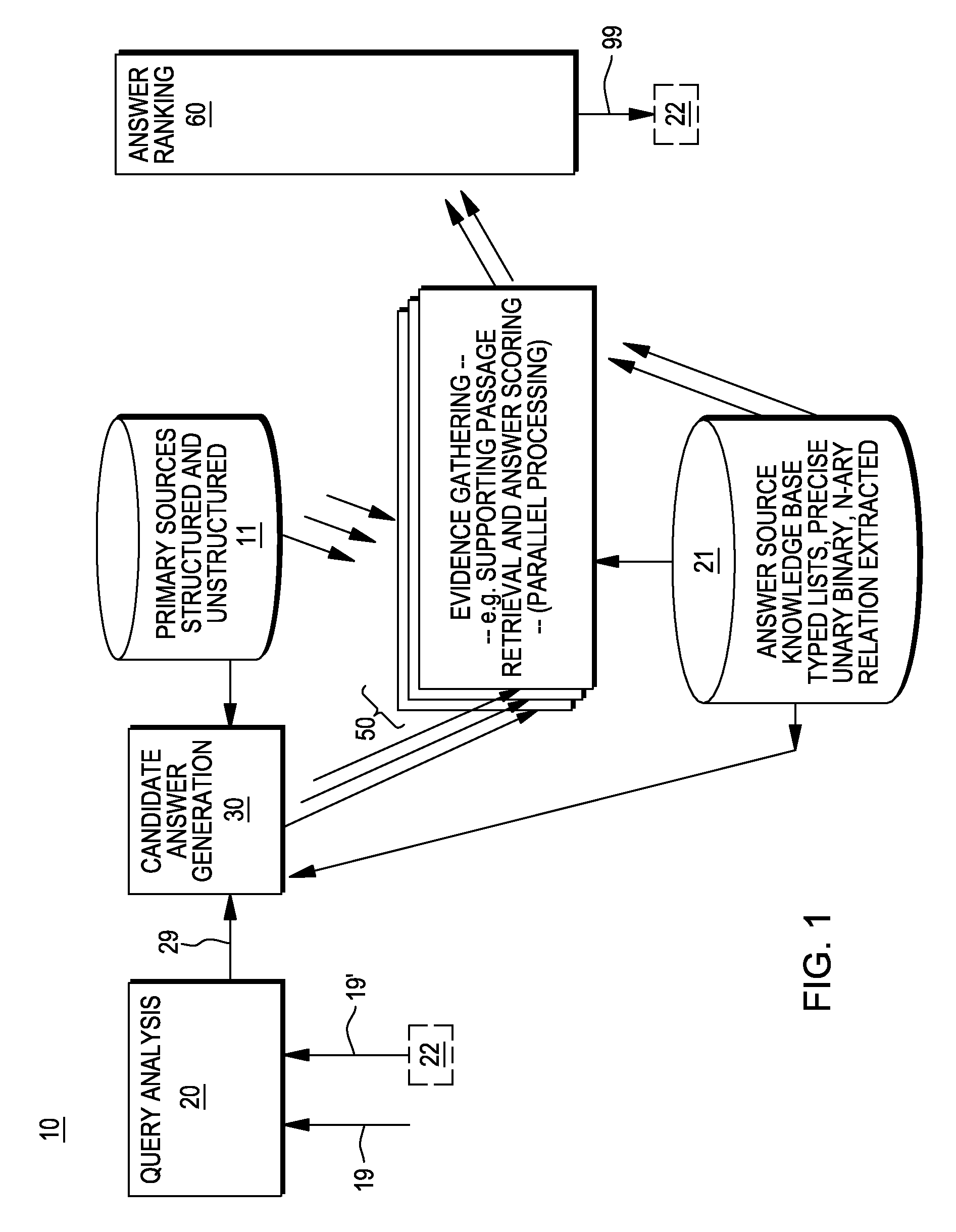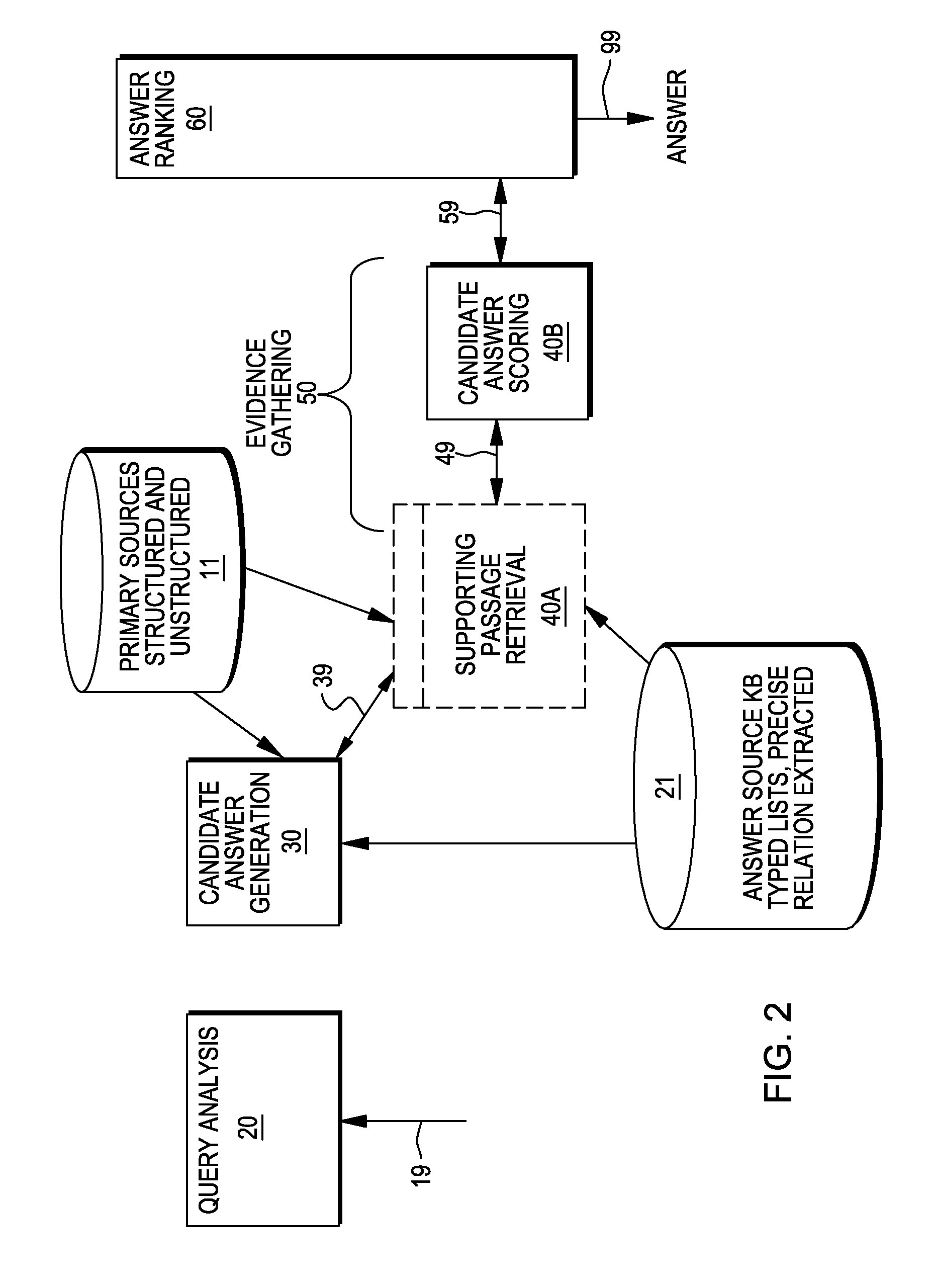Providing answers to questions using logical synthesis of candidate answers
a technology of candidate answers and logical synthesis, applied in the field of information retrieval, can solve problems such as open problems in understanding queries
- Summary
- Abstract
- Description
- Claims
- Application Information
AI Technical Summary
Benefits of technology
Problems solved by technology
Method used
Image
Examples
Embodiment Construction
[0032]As used herein, the words “question” and “query,” and their extensions, are used interchangeably and refer to the same concept, namely a request for information. Such requests are typically expressed in an interrogative sentence, but they can also be expressed in other forms, for example as a declarative sentence providing a description of an entity of interest (where the request for the identification of the entity can be inferred from the context). “Structured information” (from “structured information sources”) is defined herein as information whose intended meaning is unambiguous and explicitly represented in the structure or format of the data (e.g., a database table). “Unstructured information” (from “unstructured information sources”) is defined herein as information whose intended meaning is only implied by its content (e.g., a natural language document). “Semi structured information” refers to data having some of its meaning explicitly represented in the format of the...
PUM
 Login to View More
Login to View More Abstract
Description
Claims
Application Information
 Login to View More
Login to View More - R&D
- Intellectual Property
- Life Sciences
- Materials
- Tech Scout
- Unparalleled Data Quality
- Higher Quality Content
- 60% Fewer Hallucinations
Browse by: Latest US Patents, China's latest patents, Technical Efficacy Thesaurus, Application Domain, Technology Topic, Popular Technical Reports.
© 2025 PatSnap. All rights reserved.Legal|Privacy policy|Modern Slavery Act Transparency Statement|Sitemap|About US| Contact US: help@patsnap.com



